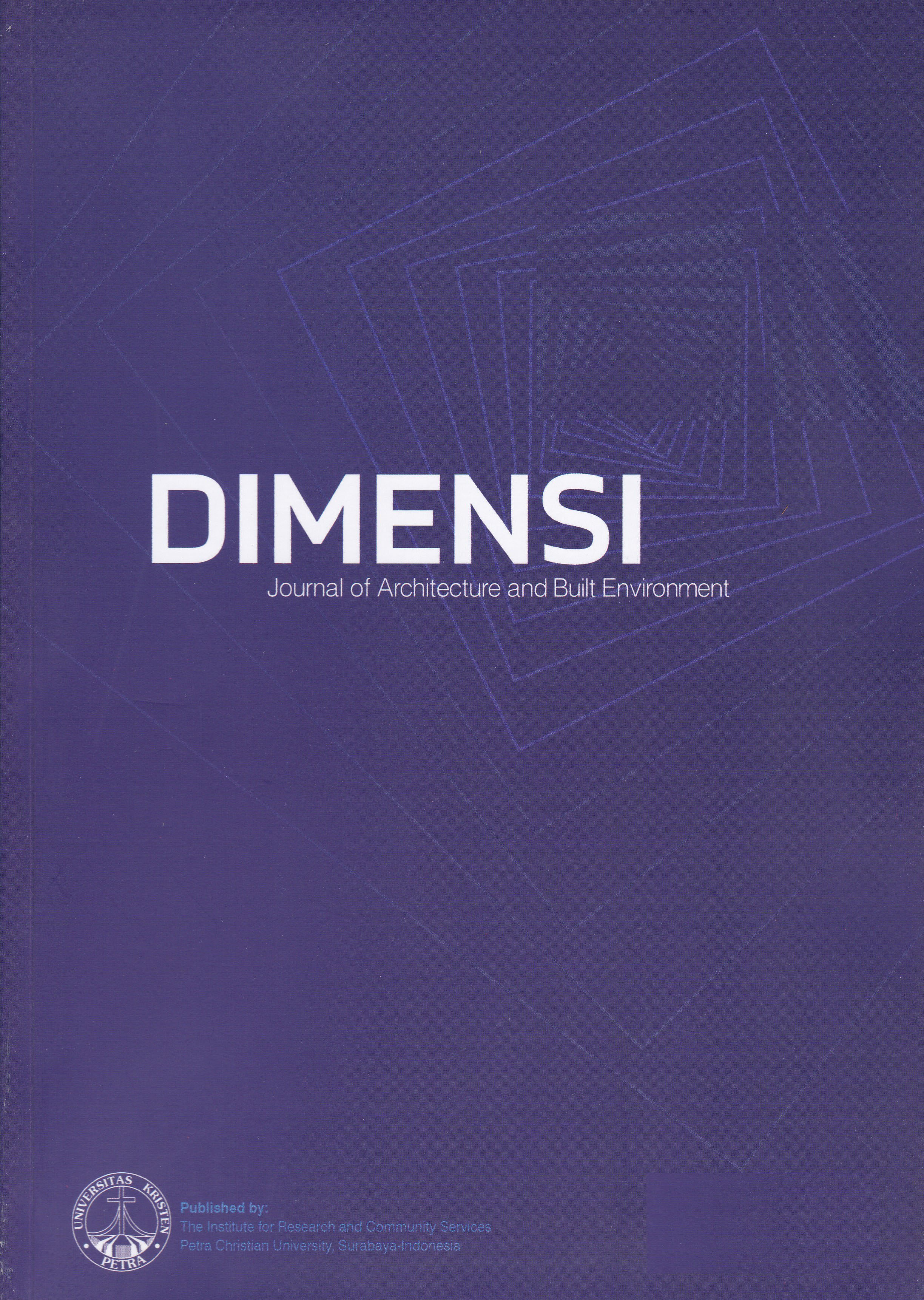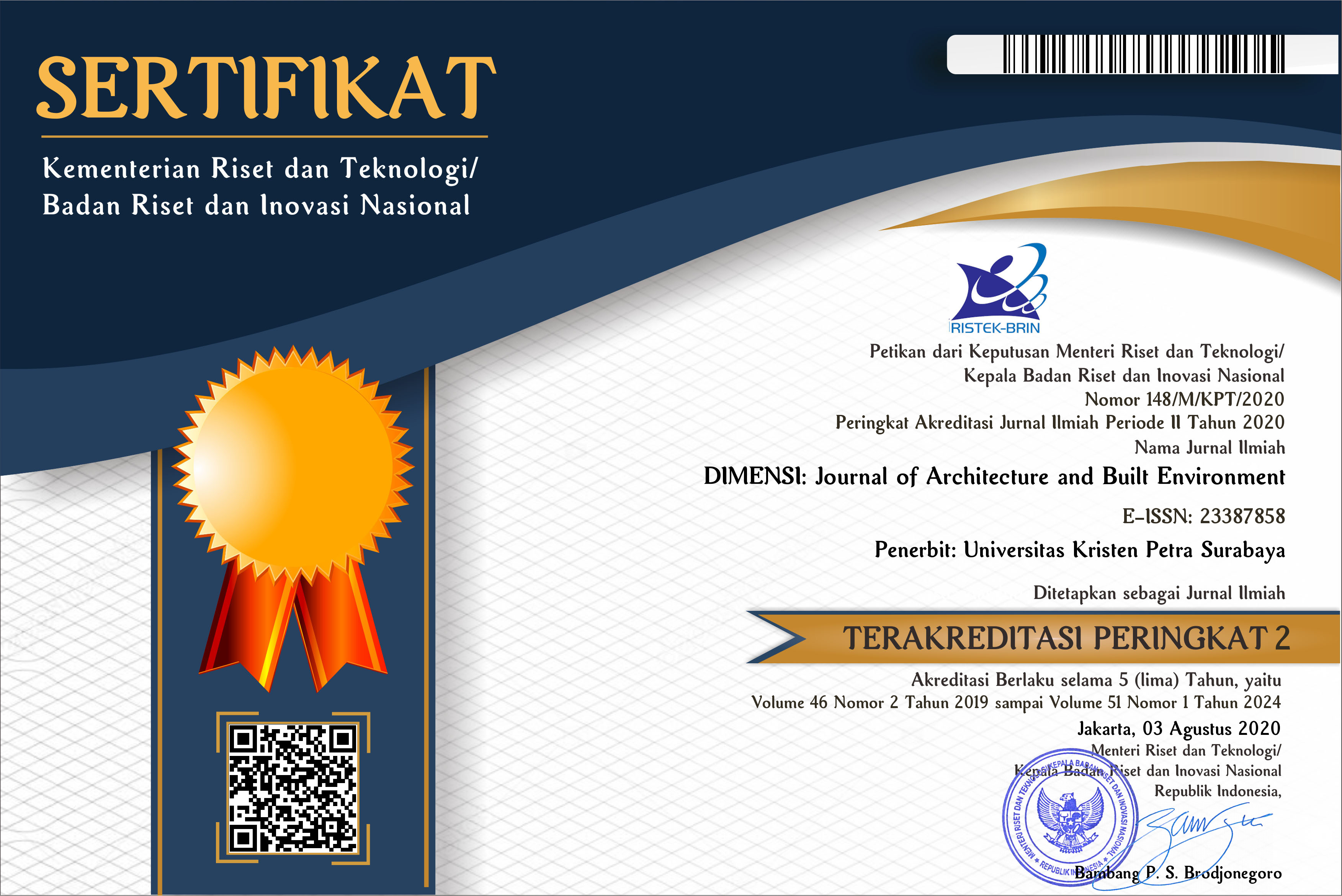REDESIGNING A NEGATIVE SPACE THROUGH CPTED IN SUSUKINO DISTRICT, SAPPORO, JAPAN
 :
:
https://doi.org/10.9744/dimensi.47.2.65-70
Keywords:
Negative Space, Prostitution, Tourism, CPTEDAbstract
As an impact of prostitution site, criminality is basically triggered by a negative space; however, prostitution site in Japan is a part of the city. Susukino in Sapporo, for example, plays a role as a tourist attraction as well as a prostitution site. This research aims to figure out how the architectural design in Susukino influences criminality prevention as an effect of prostitution site. Survey and interview were conducted to observe zonation in Susukino and to define a negative space as a problem of the district. Later, seven aspects: 1)Defensible space, 2)Territoriality, 3)Surveillance, 4)Lighting, 5)Landscaping, and 6)Physical security; based on CPTED (Crime Prevention Through Environment Design) theory were applied as a basis to propose a safe ambiance in the negative space by increasing street connectivity.
Downloads
References
Bloomberg. (2013, March 29). Sapporo sex shops count: BOJ poll. Business.
Gardner, R. A. (1981, April). Crime Prevention Through Environmental Design. Retrieved May 28, 2018
Merry, S. E. (1981). DEFENSIBLE SPACE UNDEFENDED: Social Factors in Crime Control Through Environmental Design. Sage Publication.
Newman, O. (2007). Architectural design for crime prevention. Michigan: National Institute of Law Enforcement and Criminal Justice.
Peters, L. (2014, April 24). Color Science Reveals Which Shades Are Perceived As Sexy, Sad, Calm, and Confident. Retrieved from Bustle: https://www.bustle.com/articles/22110-color-science-reveals-which-shades-are-perceived-as-sexy-sad-calm-and-confident
Downloads
Published
How to Cite
Issue
Section
License
Authors who publish with this journal agree to the following terms:
- Authors retain copyright and grant the journal right of first publication with the work simultaneously licensed under a Creative Commons Attribution License that allows others to share the work with an acknowledgement of the work's authorship and initial publication in this journal.
- Authors are able to enter into separate, additional contractual arrangements for the non-exclusive distribution of the journal's published version of the work (e.g., post it to an institutional repository or publish it in a book), with an acknowledgement of its initial publication in this journal.
- Authors are permitted and encouraged to post their work online (e.g., in institutional repositories or on their website) prior to and during the submission process, as it can lead to productive exchanges, as well as earlier and greater citation of published work (See The Effect of Open Access).



















